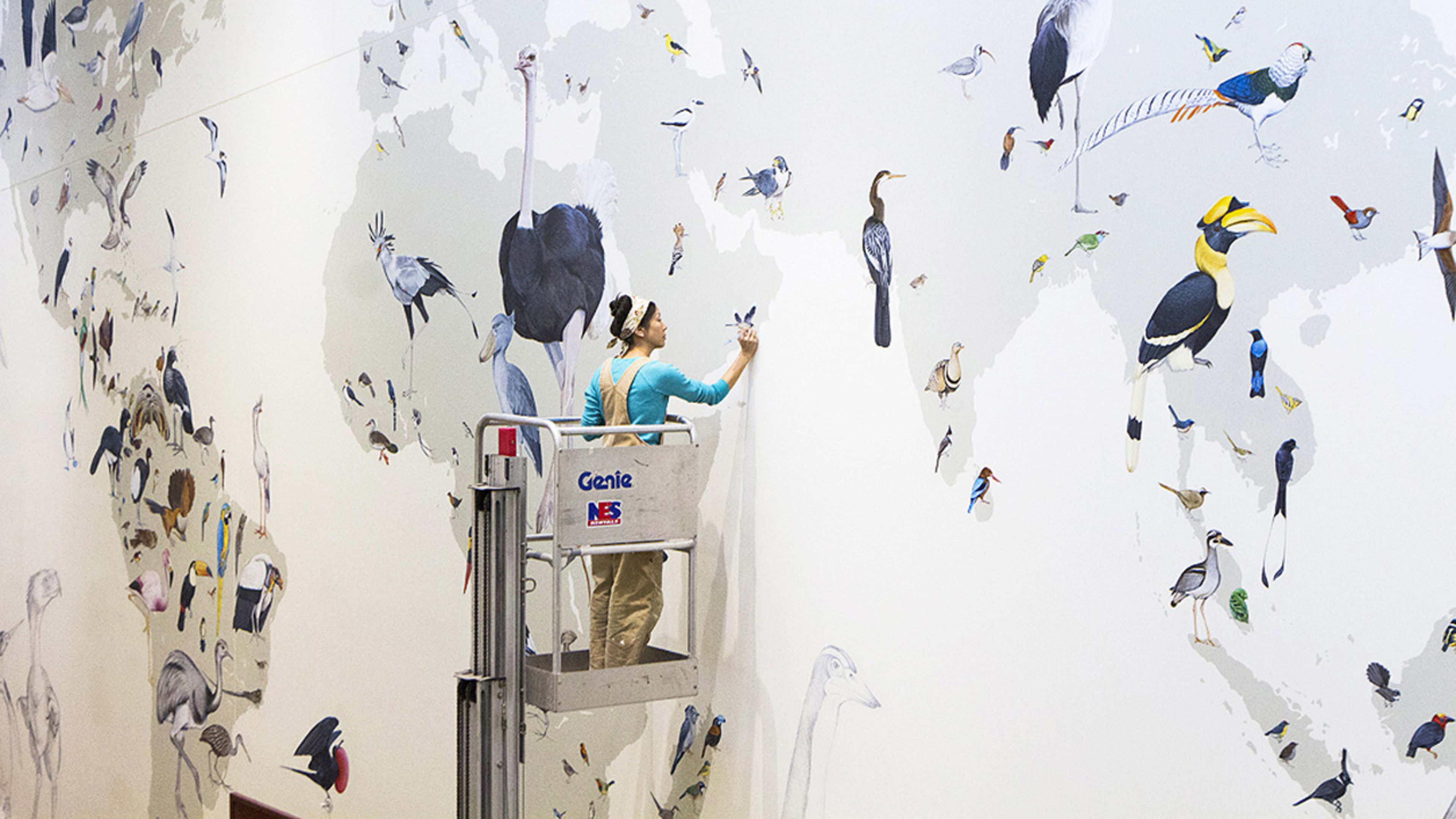It’s been called the “Sistine Chapel for worshipping birds” by the National Audubon Society–a mural at the Cornell Lab of Ornithology so enormous in scale and ambitious in scope, birders and non-birders alike are struck by its sheer size and breadth. Not to mention, it took two and a half years to create.
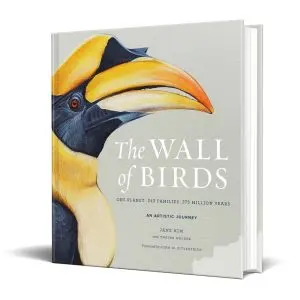
“Neither of us are ornithologists, neither of us are scientists,” says Walker. “We knew we weren’t just going to write another ornithological tome.”
The result, published by Harper Design, features reflections on life learned from years spent studying the various feathered species. Migration and gender dynamics are just a couple of the themes that emerge in this perfectly timed mediation on art, nature, and the human condition.
How The Wall of Birds mural came together confirms one of life’s great lessons as well: that great things happen with hard work and a little bit of luck. After earning a degree from the Rhode Island School of Design and doing some work as a decorative painter, Kim was pursuing a new path in science illustration and studying as an intern at the Cornell Lab of Ornithology when John W. Fitzpatrick, the director of the Cornell Lab of Ornithology, happened across an article in National Geographic about Kim’s mural work.
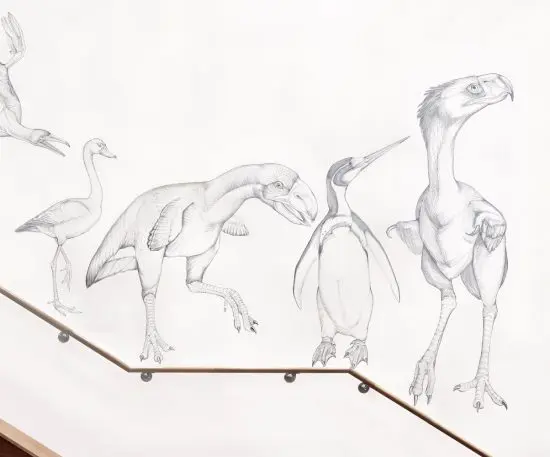
“He opened his arms and just said, ‘I’ve always envisioned a mural here,'” says Kim. “It was quite a dream come true.”
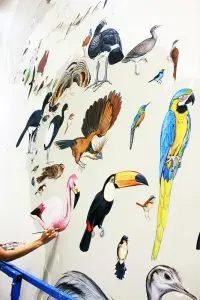
It would then take Kim two and a half years to complete the project. During the process, her sketches of birds were submitted to a team of experts for accuracy review, then redone, before a final black-and-white charcoal sketch was used to create scale life-size renderings. She then did a quick computer color comp to make a concept sketch with color, before finally putting paintbrush to wall.
“I was required to paint this bird for the first time in color on the wall,” says Kim.
To ensure she was getting accurate colors and a uniform palette, Kim created what she calls her Avian Pantone chart with colors like Finch Feet (a peachy mauve), Albatross Light (a light grayish blue) and Saddle-Billed Stork Legs (dark gray). The most frequent color used was Cassowary Neck, a kind of soft ocean blue. “It’s in every single living bird that is painted on that wall,” she says. The mural also includes extinct species that are painted in a ghostly gray scale.
The Wall of Birds also exists as an online interactive, allowing readers everywhere to see the work and learn more about the various species, but it’s the book that has allowed Kim and Walker to explore deeper themes about nature and humanity.
“We wanted to share something different that you couldn’t get out of the interactive, that you couldn’t get if you visited the wall yourself.” Along with the technical process reflections in the book, there are poignant essays about birds and the natural world that have become central to the couple’s larger body of work.
Since finishing the mural, the husband-and-wife duo embarked on new a new trajectory that included opening Ink Dwell, a creative studio that “creates art that explores the wonder of the natural world.” Along with design work for clients like North Face, the couple also designs educational books, takes on public and private commissions, and contributes work to magazines.
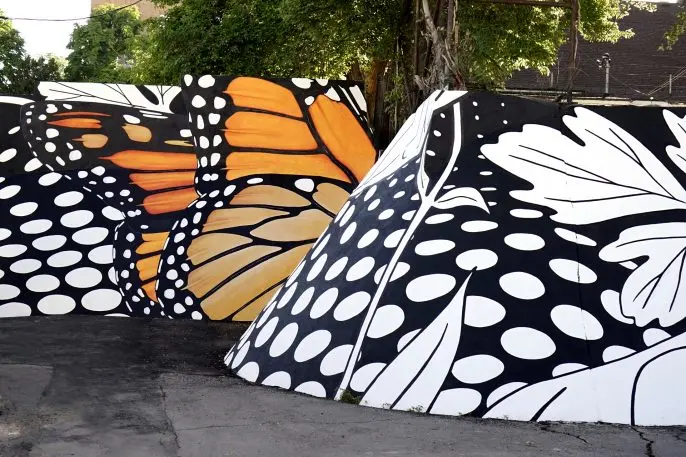
Like The Wall of Birds project, the migrating murals have a sort of deeper purpose than education. “I think it’s a beautiful way for people to start finding connections,” says Kim. “Not only are we trying to tell a story about the butterfly, but we’re trying to connect human beings.”
“It’s a concept we want to continue for the next 30 years,” adds Walker, and undoubtedly one at the core of Ink Dwell’s mission.

In the final chapter of The Wall of Birds (each chapter is devoted to the species of a given continent) titled “North America: The American Dream,” Kim and Walker reflect on the enormous migration patterns of many “American” birds.
“We asked what makes North American birds special,” says Kim. “We discovered the thing that makes them remarkable is their long migrations. These really are the great migrators.”
The pair hopes that these sorts of examples of life in the natural world can offer access points of discussions about people of all backgrounds.
“The birds are doing these great migrations for opportunity, they are doing them to have a better place to bear their young, and they’re celebrated for it,” he says. “And they add a lot of beauty and a lot of color to our country.”
Recognize your brand’s excellence by applying to this year’s Brands That Matter Awards before the early-rate deadline, May 3.
